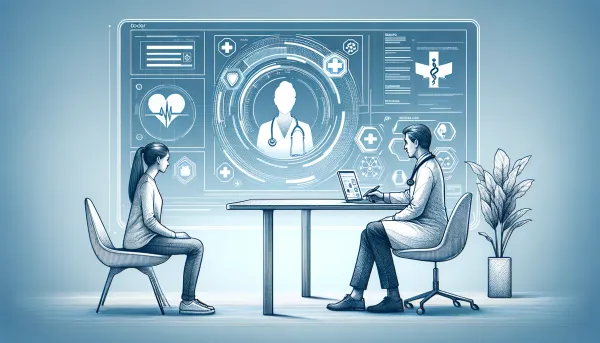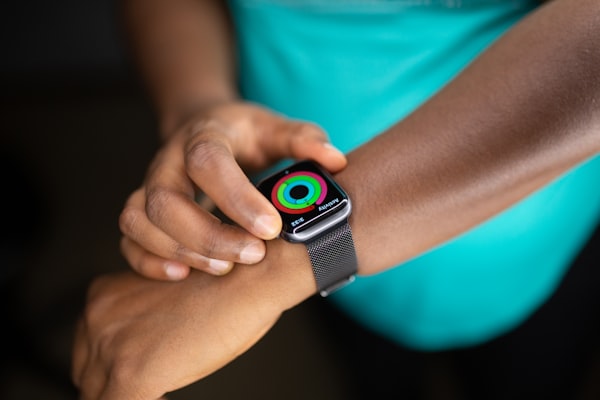Virtual Care Beyond the Pandemic
Virtual care took a steep and unexpected turn during the pandemic. As a result, the changes will not go away so easily. And that's a good thing.

A lot has been written about how digital health took an upturn in development and adoption during the COVID-19 pandemic. It’s well-known and pointed out multiple times by Eric Topol that medicine is sclerotic, resistant to change. Such a fast transition and adoption was a shock, but there was no other choice. Partly because patient demand skyrocketed and because tech is not sclerotic. It’s flexible and it constantly develops further, sometimes even too far. Every aspect of healthcare was put under a robust cycle of development. If medicine is so resistant to change, we shouldn’t expect it going away from technology any time soon, should we?
For this issue, let’s assume healthcare is made up of hospital visits, prescriptions and long-term care with follow-ups.
But the base for this is connectivity. I was a long-time sceptic of 5G networks, which I found to be a little over the top. 4G is fast enough for daily use and doesn’t require a huge number of antennas. This is the case with 5G, which emits much smaller radio waves with a much shorter useful physical range. The problem was the way I thought about 5G. Honestly, we rarely need such high-speed internet for daily use. But 5G allows more. It allows “new applications in the internet of things (IoT) and machine to machine areas”. In digital health, we call IoT the Internet of Medical Things (IoMT), which is a lateral and vertical (within areas and between them) connection of wearables, medical records, sensors and apps. This would enable “remote patient monitoring and virtual consultations over HD video, as well as video-enabled prescription management and connected ambulances”.
Here’s a seriously great article in Forbes. It goes into more detail than this first paragraph and I encourage you to read it to understand what is and will be happening.
Virtual hospital visits
HD video, countrywide connectivity and data from IoMT will allow healthcare workers to provide virtual care. This creates an ecosystem of devices and data that doctors can use to direct patient care and treatment.
The ecosystem consists of five different elements (defined by their location): on the body, at home, in community, in the clinic and hospital. They combine to give healthcare professionals a compass for providing care and treatment wherever is best for the patient and to support the “hospital at home” model, a concept first developed by the Johns Hopkins Hospital that’s now gaining traction with healthcare providers around the world. - Forbes
No one says this is optimal or the best type of care. Quite the contrary, my opinion is that doctors should physically interact with patients. But maybe that’s not always necessary or possible. I don’t think anyone would be against a simple and regular virtual check-up. Nor do I think is it safe for patients to walk around hospital wards during a global pandemic. Virtual care, at least to some extent, offers a solution.
If we’re always talking about how doctors need to be patient-centred and build treatment according to the patient, this is one way to do it. IoMT along with automated systems will free doctors to think about patients and their conditions. Not bureaucracy and administrative work, which is, for example, the critique too many times in Slovenia’s healthcare.
But the rabbit hole of patient-centricity and digital health in the future goes deeper. It also touches on how clinical trials are planned and executed. This shift in mindset and approach is not just to “think about the patient, but think as the patient”. Patients often travel to hospitals to participate in clinical trials, even for assessments that could be done remotely. Again, it’s not a do-or-die shift to digital clinical trials. But it offers flexibility and improves the chance of trials’ success.
The data shows that in clinical trials that take longer to conclude, patients tend to lose interest and drop out, which delays trial timelines and increases their cost. Even more, by conducting these remotely, researchers can include more patients from more geographical areas. Not to mention the possibility of researchers acquiring more and more relevant data (for example, blood pressure or heart rate data every day). More in another great article here.
Prescriptions
Prescription medicine and medical devices are probably “the most advanced” sector of virtual care because it’s the simplest. If a patient needs to take medicine over a longer period, why not just have patients reach out via email when they need to renew it. Luckily, this is quite settled and works well. This is speaking from experience in Slovenia.
There’s an interesting UK company I stumbled upon called Echo by Lloyds Pharmacy that takes this on a new level. They partnered with the NHS and deliver prescription medicines to patients’ homes when they order it with them. Simple, effective, patient-centred and on-demand.

Then again, how about apps? There’s a wide range of medical apps across all platforms that could be beneficial for patients but are for example paid.
The German government passed the Digital Healthcare Act (DVG) that officially allows doctors to prescribe apps for their patients. They are the only country to do this thus far. As of last week, they can prescribe “the Kalmeda app, which aims to help with tinnitus, and Velibra, a therapy programme for anxiety disorders”.
This makes so much sense, as “only 6% of patients have used paid medical apps in the past, almost 60% would use these digital tools if their physician prescribed them and the costs were covered by the payer”. Furthermore, apps that are low-risk medical devices can now apply for “fast-track” entry to the market. All of this is the initiative of the German government to promote the digitalisation of healthcare.
Long-term care
Long-term care is the biggest healthcare burden today and will be even greater in the future as the population will get older and live longer. The demand for healthcare professionals cannot follow the trend and that’s why a more digital approach has to take place. To scale long-term care, take the burden off doctors and hospitals and make it easier and better for the patients.
Ivan Beckley, student doctor and co-founder of Suvera Health, put it beautifully in his article when he wrote that patients with chronic diseases need proactive, accessible and personalised care. Patients with chronic diseases such as hypertension, COPD or depression are relying on hundreds of doctors’ appointments during their lifetime. The patient experience would be so much better if managed (what can be) remotely. This is also exactly what Suvera Health is all about - improving the care experience of patients with chronic conditions.
By building a feedback loop with our condition review we can begin to intelligently advise a positive incremental change to treatment up to date with the latest guidelines. - Ivan Beckley
Lastly, all of this can be made available with IoMT. Even today, companies such as Withings offer platforms for doctors to follow patient data from their sensors in real-time and on demand. This once again makes patient care centred and more comfortable…just better for both parties.
I’m sure there are more and there are many more to come with better connectivity and a more flexible medicine.




